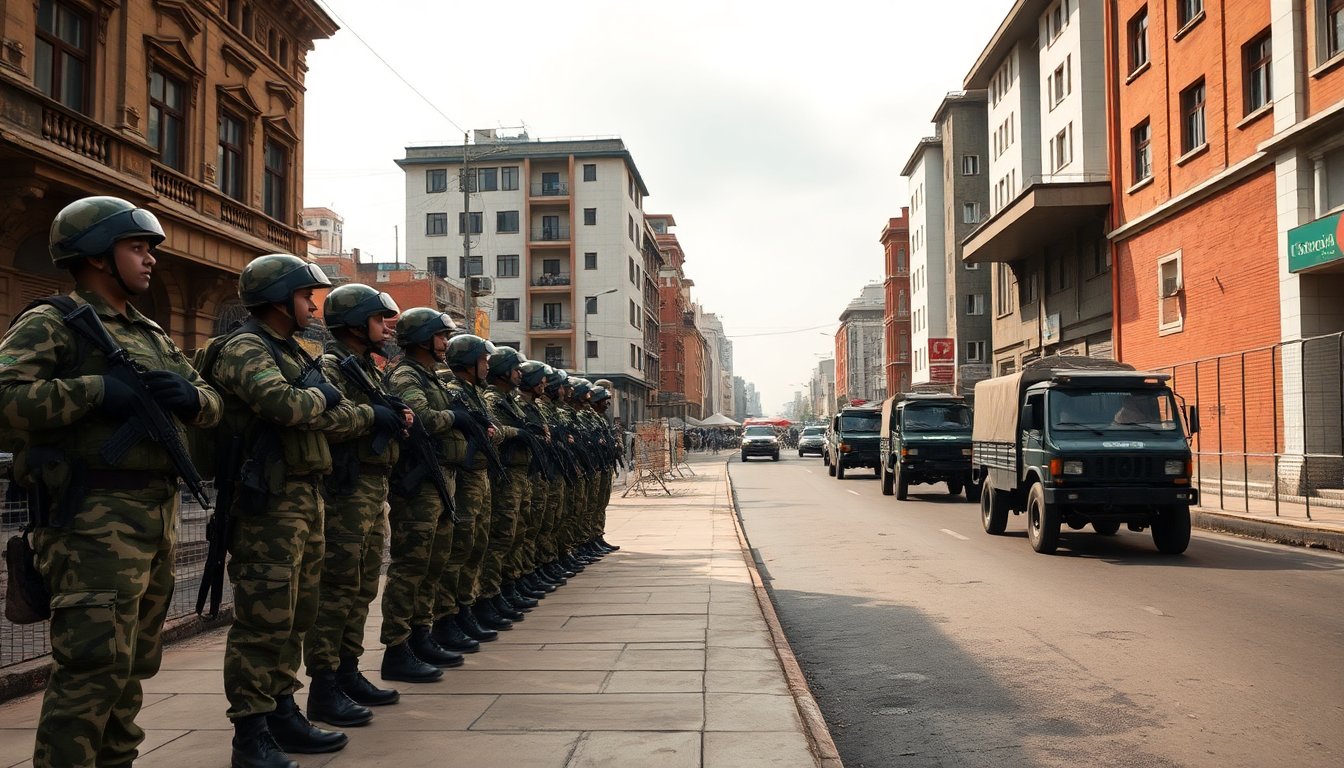Table of Contents
The recent upheaval in Kathmandu, Nepal, marks a significant chapter in the nation’s history. Protests have ignited a fierce response from both the government and the military. Armed soldiers now patrol the streets, enforcing an indefinite curfew. This situation raises urgent questions about governance, public sentiment, and the potential for further unrest. This article examines the factors driving these protests, the government’s reaction, and the implications for Nepal’s future.
The Genesis of Protests
The protests in Kathmandu began with a controversial government plan to restrict access to popular social media platforms. This decision, perceived as an infringement on freedom of expression, triggered widespread outrage. However, the situation escalated dramatically following a tragic incident where security forces killed 19 demonstrators, leading to a surge in public anger and mobilization.
As tens of thousands took to the streets, the protests shifted focus from the social media ban to broader issues such as rampant corruption and high unemployment rates, which hover around 11% according to the World Bank. The disparity between the lives of the political elite and the struggles of the average citizen has fueled further resentment. The emergence of affluent “nepo kids” flaunting their wealth on social media starkly contrasts with the harsh economic realities faced by many, prompting individuals to seek opportunities abroad.
Government Response and Military Involvement
In response to the escalating protests, the Nepalese government declared an indefinite curfew and deployed the army to restore order. Army spokesman Raja Ram Basnet emphasized the military’s commitment to safeguarding lives and property amidst the chaos. However, the military’s presence has not quelled the unrest; it has often intensified confrontations between protesters and security forces.
The resignation of key government officials, including Home Minister Ramesh Lekhak and Prime Minister KP Sharma Oli, reflects the gravity of the situation. President Ram Chandra Poudel’s attempts to appoint a caretaker government have been met with skepticism, as the populace demands accountability and tangible reforms. The military’s involvement, with helicopters transporting ministers to safety, underscores the precariousness of the current political climate.
Regional Implications and the Way Forward
The unrest in Kathmandu resonates throughout South Asia, where youth-led uprisings have led to governmental changes in nearby countries like Bangladesh and Sri Lanka. This regional context raises concerns about stability and governance across the area, as young populations increasingly demand transparency and action from their leaders.
China’s response to the protests, urging the Nepali government to manage the situation and restore order, highlights the geopolitical stakes involved. As China seeks to extend its influence through initiatives like the Belt and Road Initiative, a stable Nepal is crucial for its broader strategic ambitions.
As protests continue and the situation remains fluid, the need for dialogue and resolution is paramount. Stakeholders must prioritize addressing the underlying issues of corruption and unemployment, ensuring that the voices of the people are heard in the governance process. Only through meaningful engagement can Nepal hope to navigate these turbulent waters and emerge stronger.


